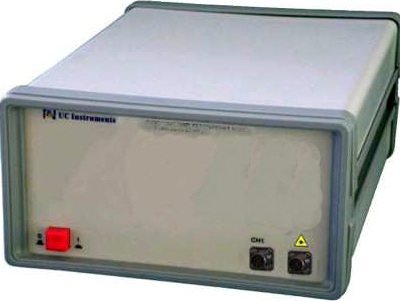
|
|
The UC INSTRUMENTS GM8036 Laser Sweep Optical Spectrum Analyzer is a PC control spectrum analyze system for passive components tests. It provides high performance in testing CWDM/DWDM components, GFF, Interleaver, WSS, AWG & PLC components, optical amplifiers, DWDM systems, and performing other general-purpose fiber optical test and measurement applications. This system can be integrated with optical attenuator & power meter, leading to a high performance test system platform with high wavelength accuracy and rapid scan wavelength tunability. Specifications. Tunable Laser Source. Wavelength range: 1525.00 to 1568.00 nm. Output Power: >= 20 mW. Wavelength resolution: 1.0 pm. Absolute wavelength accuracy: +/- 10 pm, tpy. < 5 pm. Relative wavelength accuracy: +/- 5 pm, Typ. +/- 2 pm. Wavelength repeatability: +/- 3 pm, typ. +/- 1 pm. Wavelength stability (typ., 24 hrs at constant temperature: <= +/- 5 pm. Tuning speed: <= 2 ms per step. Power stability: < +/- 0.1 dB, 24 hours. Power repeatability: +/- 0.05 dB. Power linearity: +/- 0.3 dB. Power flatness versus wavelength: 0.3 dB; typ., 0.05dB. Side-mode Suppression ratio: >= 40 dBc. Relative intensity noise(RIN. Typ.): < -135 dB. Power Meter. Wavelength Range: 850 nm to 1620 nm. Power Measurement Range: +13 dBm to -70 dBm. Power Accuracy: < +/- 4%. Power repeatability: < 0.1 dB. Sweep Function. Sweep Mode: Fast Continue Spectrum Sweep. Resolution: 1 PM. Accuracy: 5 PM. Power Display: Peak Power Display. Center Wavelength Function: 3 dB Down Center Wavelength Display. Reference: Function Testing Reference Setup.
|